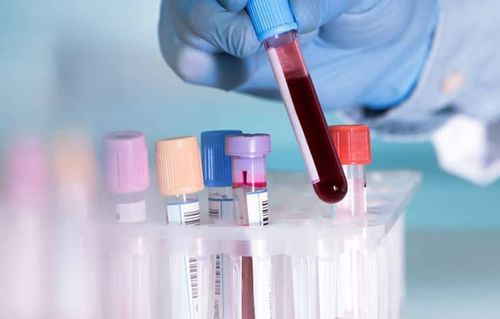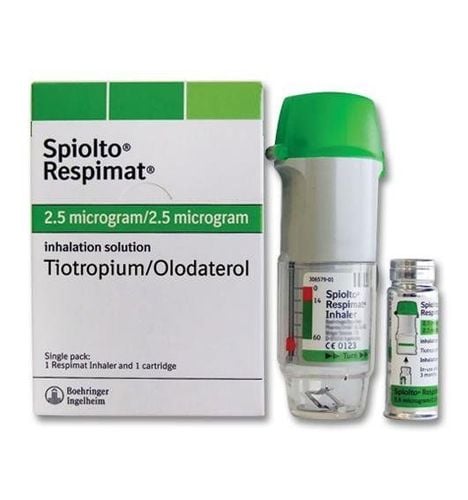This is an automatically translated article.
The article was professionally consulted by Specialist Doctor I Nguyen Truong Duc - Radiographer - Department of Diagnostic Imaging and Nuclear Medicine - Vinmec Times City International General Hospital. Dr. Duc has more than 17 years of experience in diagnostic imaging.X-rays do not have much value in diagnosing COPD, but they play an important role in disease orientation. Abnormal test results combined with history taking and other tests will help make a correct diagnosis, ruling out respiratory diseases with similar symptoms.
1. What is Chronic Obstructive Pulmonary Disease (COPD)?
Chronic obstructive pulmonary disease (COPD) is a form of obstructive pulmonary disease. The disease tends to get worse over time. The main symptoms include shortness of breath, cough, and sputum production. The majority of patients with chronic bronchitis have COPD.COPD can be prevented by limiting exposure to risk factors such as smoking and dust from polluted air. Indications for the treatment of COPD include: smoking cessation, immunization, rehabilitation, use of bronchodilators and steroids. Some cases can be improved with long-term oxygen therapy or a lung transplant. In patients with acute exacerbations, prompt hospitalization and consideration should be given to increasing the dose.
2. How does chronic obstructive pulmonary disease (COPD) manifest?
COPD is more common in people between the ages of 50 and 60 with a long history of smoking. The patient has a history of coughing and spitting up a lot, has had episodes of acute respiratory infections. Some people have frequent flares of the disease that can lead to respiratory failure, heart failure, and type B bronchiolitis. Others present with more shortness of breath than cough and sputum. appear later.The prominent symptoms of COPD are coughing up phlegm and shortness of breath. At first, the patient has little sputum in the morning, the sputum has mucus. When there is an outbreak, the sputum is often purulent, later coughing up sputum occurs frequently.

Triệu chứng nổi bật của COPD là ho khạc đờm và khó thở
3. How can X-rays help in diagnosing chronic obstructive pulmonary disease (COPD)?
Signs of COPD that may show up on an X-ray include a larger-than-normal lung size, a lower and flatter-looking diaphragm, and a longer-looking heart.COPD X-ray will not be of high diagnostic value if the condition is mainly chronic bronchitis. However, in the case of emphysema, the doctor can see more structural problems in the lungs on an X-ray. Emphysema on chest X-ray shows:
Lungs are bright due to destruction of vascular background There are air bubbles at the top or bottom of the lung, which are bright spots on X-ray with a diameter of > 1cm The diaphragm is lowered below the 7th rib arch, the diaphragmatic arch is enlarged, there is a space behind the sternum > 4.5 cm In case of severe pulmonary emphysema, the diaphragmatic arch may be inverted, on lateral and straight films the heart can be seen hanging above the head. diaphragm, heart/thoracic index <1⁄2.
Air bubbles in the lungs are air sacs that form near the surface of the lungs. When they rupture, air rushes around the lungs, also known as spontaneous pneumothorax. This is an urgent emergency with obvious chest pain and increased shortness of breath. The X-ray image of the pneumothorax is black, without pulmonary ridges, the lung parenchyma is pushed and collapsed towards the hilum. If there is a combined effusion, there are whiter areas in the lower region, no curve of the pleural effusion. Because normally, the lungs only contain air, so the X-ray image is only black, when there are fluids or foreign bodies, the X-ray image will show bright colors.
In general, chest X-ray images will provide the doctor with valuable information about the condition of the heart as well as the surrounding blood vessels such as the size of the heart, the size of the blood vessels, the signs of pericardial effusion. or signs of calcification, hardening of valves and blood vessels. On the X-ray film, the image of pulmonary embolism can be seen, the pulmonary artery is sparse, and the color is increased in depth.
In addition, X-ray results can also detect bone problems in the chest such as fracture and fracture location. All of the above conditions from internal or external factors can lead to chest pain.
4. Other tests in the diagnosis of COPD

Xét nghiệm công thức máu ciúp phát hiện biến chứng đa hồng cầu trong COPD
Pulmonary ventilation (TKP): TKP plays an important role in definite diagnosis of COPD, knowing the exact stage of the disease, monitoring treatment results, progression and prognosis of the disease. Measurement of TKP in patients with chronic cough, sputum production, or exposure to risk factors allows an early diagnosis of COPD.
Arterial blood gas: Arterial blood gas is an important test to help identify acute or chronic respiratory failure and acid-base imbalance in COPD. Especially in the severe stage, most of them have decreased PaO2, increased PaCO2, so measuring arterial blood gas is very necessary.
Decreased PaO2 in COPD: Mainly due to alveolar hypoventilation and imbalance between ventilation and circulation. Decrease in PaO2 but not increase in PaCO2: Occurs in mild and moderate COPD. Electrocardiogram: Does not help definitively diagnose COPD, but helps diagnose heart complications of COPD. Abnormal changes in the ECG in COPD are caused by:
Emphysema : Emphysema causes a relative change in the position of the heart in the thoracic cavity, affecting the electrodes that are ultimately the results of the electrocardiogram. Bronchiectasis: Increased pressure in the pulmonary artery affects the function of the right atrium and ventricle. From there detect abnormalities on ECG results Blood count: Helps detect polycythemia vera in COPD with Hct > 55%. In addition, it also helps to detect chronic isochromic anemia caused by inflammation.
Please dial HOTLINE for more information or register for an appointment HERE. Download MyVinmec app to make appointments faster and to manage your bookings easily.
Article referenced source: Ho Chi Minh City Respiratory Society












